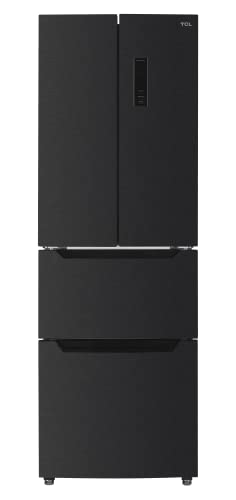The Comprehensive Guide to Refrigerators in the UK
Refrigerators are an essential appliance in every household, serving a crucial role in food preservation and security. The UK market uses a varied variety of fridge types, sizes, features, and brands. This short article aims to provide an in-depth understanding of fridges offered in the UK, including their functions, energy effectiveness, and elements to consider when buying.
Types of Refrigerators Available in the UK
When searching for a refrigerator, it is important to understand the different types offered. this article features its own set of features and functions, accommodating different needs and choices. The most common kinds of fridges found in the UK include:
1. Leading Freezer Refrigerators
- Description: The traditional style, including the freezer compartment on top.
- Pros: More budget friendly, spacious, easy access to fresh food.
- Cons: Limited freezer area, the top might be less convenient for bulk products.
2. Bottom Freezer Refrigerators
- Description: Freezer lies at the bottom, permitting easier access to fresh food.
- Pros: Greater convenience, better visibility of fresh products.
- Cons: Usually more expensive, some may battle with large frozen items.
3. Side-by-Side Refrigerators
- Description: Features two vertical compartments, one for the fridge and one for the freezer.
- Pros: Ample storage space, easy to access both frozen and fresh foods.
- Cons: Wider footprint, they may not fit in smaller kitchens.
4. French Door Refrigerators
- Description: Combines features of bottom freezers and side-by-sides, with 2 doors for the fridge on top.
- Pros: Stylish style, large, and frequently includes advanced functions.
- Cons: Higher cost point, lines up improperly with smaller sized cooking area layouts.
5. Compact Refrigerators
- Description: Smaller designs designed for restricted areas.
- Pros: Ideal for little apartments or workplaces, energy-efficient.
- Cons: Limited storage capacity, might lack features.
6. Integrated Refrigerators
- Description: Designed to blend effortlessly with kitchen area cabinetry.
- Pros: Custom fit, visual appeal, increases home value.
- Cons: Higher expense, might provide less flexibility in placement.
7. Smart Refrigerators
- Description: Equipped with Wi-Fi and smart technology functions.
- Pros: Advanced features like touch screens and internal cams.
- Cons: Expensive, more complicated to repair.
| Refrigerator Type | Accessibility | Typical Price Range | Energy Efficiency |
|---|---|---|---|
| Top Freezer | Moderate | ₤ 300 - ₤ 600 | Typical |
| Bottom Freezer | High | ₤ 400 - ₤ 800 | Above Average |
| Side-by-Side | Easy | ₤ 800 - ₤ 1500 | Differs |
| French Door | High | ₤ 800 - ₤ 2000 | High |
| Compact | Restricted | ₤ 200 - ₤ 500 | Typical |
| Integrated | Custom-made | ₤ 1000 - ₤ 2500 | High |
| Smart | Variable | ₤ 1200+ | High |
Key Features to Consider
- Energy Efficiency: Look for designs that are energy-efficient. In the UK, home appliances are ranked from A (most effective) to G (least effective). An A+ ranking and above can lead to substantial energy savings.
- Capacity: Choose a fridge with sufficient capacity for your household. A standard guideline is 100-200 liters per individual.
- Noise Level: Consider models that run silently, particularly if the kitchen is near living areas.
- Cooling Technology: Features like frost-free technology deserve the investment, as they minimize maintenance.
- Adjustable Shelves: Having adjustable shelves enhances the versatility to keep bigger items.
- Temperature Control: Check for easy-to-use temperature controls and zones for different types of food.
- Design: Choose the style and color that matches your cooking area visual, whether you prefer a contemporary stainless-steel appearance or a classic retro surface.
Buying Tips
- Determine Your Needs: Consider your cooking habits, household size, and kitchen space.
- Set a Budget: Refrigerators come in different cost varieties. Establish a budget plan before you begin shopping.
- Research Study Energy Ratings: Invest in energy-efficient designs to minimize utility costs.
- Read Reviews: User experiences can supply insights into dependability and efficiency.
- Compare Brands: Some brand names are understood for their sturdiness while others may provide more ingenious features.
Often Asked Questions (FAQs)
1. The length of time do fridges normally last?
- Fridges usually last between 10 to 20 years, depending on the brand and how well they are kept.
2. Are there any maintenance tips for extending the life of a refrigerator?
- Frequently tidy the coils, inspect the door seals, and occasionally defrost if required to maintain optimum performance.
3. What is the best size refrigerator for a family of 4?
- For a household of four, a refrigerator with a capacity of around 400-600 liters is generally sufficient.
4. Do I need to worry about energy intake when buying a refrigerator?
- Yes, energy usage is very important. Search for systems with high energy performance ratings to reduce month-to-month expenses.
5. Should I choose a fridge with a water and ice dispenser?
- This function can be practical, particularly for households. Nevertheless, it might require more maintenance than basic designs.
Purchasing a refrigerator is a considerable decision for any home in the UK. With Online Fridge offered, each with its unique features and benefits, it is crucial to evaluate individual requirements before deciding. By thinking about factors such as energy efficiency, capability, and style looks, customers can choose a fridge that lines up well with their lifestyle, ultimately boosting their kitchen experience while securing food quality and freshness.

